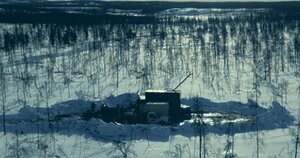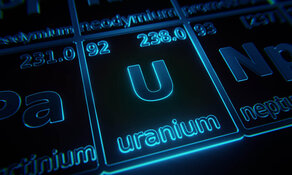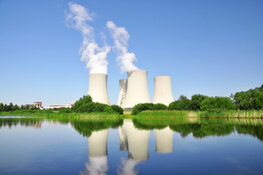The Energy Report: Thank you for joining us again. What major changes have unfolded in the uranium sector since you last spoke with The Energy Report in June?
Rob Chang: Let's look at uranium pricing first. The spot price went through the summer doldrums, as it usually does. It dipped slightly but stayed relatively flat since June. It's down about 3% and is currently in the low $50s. The long-term price declined by about 6%. It was around $68 when we last spoke. It's now $64. But there has been some good news. Looking at it from a global standpoint, the number of nuclear reactors under construction, planned or proposed has significantly increased. There are currently 565 in various stages as opposed to 553 back in June. We've also seen some M&A activity heat up the market. Cameco Corp.'s (CCO:TSX; CCJ:NYSE) and Rio Tinto's (RIO:NYSE; RIO:ASX) bids for Hathor Exploration Ltd. (HAT:TSX.V) were huge news items. More recently, the China Guangdong Nuclear Power Corp has resumed talks with Kalahari Minerals plc (KAH:LSE; KAH:NSX) and Extract Resources Ltd. (EXT:TSX; EXT:ASX) to acquire them as well. It's been a pretty interesting time for the uranium space since we last spoke.
TER: It sounds like some stability has returned to the sector and long-term prospects remain positive.
RC: I would definitely agree. The prospects haven't changed in terms of supply and demand. There was a lot of initial negative sentiment toward what happened with Fukushima. Since then, what we've actually seen is something that, in my opinion, is beneficial in the long term for the industry in that countries around the world reassessed their nuclear programs. As a result, the overwhelming majority came out saying that they're fine or that they're putting in place improvements that will make them better. Outside of the more publicized Germany, Italy and Switzerland news regarding anti-nuclear decisions and phasing out in Germany and Italy—those are the exceptions rather than the rule. For example, Japan's own Prime Minister said he thinks it's impossible for Japan to maintain its economy without nuclear power. China has completed safety assessments a month ahead of schedule. Spain has deemed nuclear power to be irreplaceable. And the Czech Republic came out with an energy plan wherein nuclear will contribute 60–80% of the nation's power by 2050. Overall, the worldwide perception of nuclear energy has been pretty positive.
TER: Looking at the price chart, we've had a bottom around $49. Have we seen a permanent turnaround in the price of uranium, or do you foresee it fluctuating in a similar range?
RC: The $49 figure is unnaturally low based on supply and demand fundamentals. In our opinion, long-term spot prices should be closer to $70 in order for supply to match demand. This would also make new mines economic, especially low-grade mines in Africa, for example. What we've seen more recently concerns utility buying, which usually occurs in the last quarter of the year. Because utilities weren't really buying, we saw a lot more volatility than we normally do. Instead, producers became the major buyers, soaking up excess supply rather than selling the uranium they're producing—it's actually more cost-effective for them to simply buy off the market and sell it at a higher price, fulfilling their contracts that way. There will always be short-term volatility, especially since uranium is viewed as a high-beta commodity.
No matter how we look at it, we're going to see uranium and uranium equities higher than they are presently. The key question now is, when will they rebound? Right now the uranium market is negatively affected by the global economic crisis and investors are not willing to take on risk. Once things settle down, the supply/demand fundamentals behind the nuclear industry should take hold.
TER: Can you bring us up to date on the developments that have taken place with uranium companies you've been covering?
RC: Sure. Starting off with Fission Energy Corp. (FIS:TSX.V; FSSIF:OTCQX), other than the bids for Hathor coming in from Cameco and Rio Tinto, the company has had some interesting exploration results. Its Patterson Lake South Project has some exploration results showing boulder trains of high-grade uranium. It's looking very prospective and the company just announced that it's doing additional trenching.
The numbers there look very exciting, with potential for something pretty significant. It will certainly add another layer of interest to what has already been a very exciting story, given that Waterbury is right beside Hathor's Roughrider Project. On top of that, the company also has its Dieter Lake property and the Macusani as well. We're monitoring Fission's progress there with a great interest. Just from looking at it, it seems just the boulders themselves are high-grade enough to potentially have a resource.
TER: Can you clarify for people who aren't acquainted with the geology of uranium—where do the boulders come from and what is their significance?
RC: That's the interesting thing. The company is currently doing some exploration to find out exactly where the boulders originated. The potential source is northeast of where the boulders were found on the property and hopefully the whole resource is all still on the property. But, these boulders are just basically rocks on the surface. Fission has been finding pretty high-grade mineralization there.
Another company we're covering and very excited about is Kivalliq Energy Corp. (KIV:TSX.V). It has identified the western and eastern extensions to their Lac Cinquante Deposit, which has 14.15 million pounds (Mlb) of 0.79% uranium—the highest-grade uranium deposit in the world outside of the Athabasca Basin. It's located in Nunavut. The western extension has shown a high-grade intercept of 2.25% over 2.3 meters (m). That's just one hole, but we've seen interesting results from both sides. It may potentially be a much larger resource. The Lac Cinquante Deposit itself is a very small part of the overall area that Kivalliq can explore. Looking at some of their target maps, it seems like there are many targets the company can potentially test that will last them quite a long time. It's quite exciting for them as well.
TER: Nunavut—that's pretty remote.
RC: Yes, but there are other projects being developed right now in the area. AREVA (CEI:PAR), to the northeast of Kivalliq, is currently working on their Kiggavik uranium project. It is reassuring for investors to see a large uranium miner currently moving forward on an asset in the area. But you are correct; there is less infrastructure and the deposit will definitely have to be high grade and relatively large for it to be economic. However, it is the highest-grade uranium deposit outside of the Athabasca Basin, so it's got the potential.
TER: What other companies do you like?
RC: Energy Fuels Inc. (EFR:TSX) recently announced that it's purchased the Skidmore Lease in southeast Utah's Sage Plain District from a private company. This lease contains 921,000 pounds of historic resources that need to be proven up. More importantly, that lease is located near EFR's current Calliham, Crain, Sage and other nearby leases, which enables them to continue their strategy of consolidating the area. It can now start the permitting process for their third potential mine behind its Whirlwind and Energy Queen Mines, which are already waiting to go.
TER: What's the general outlook for uranium mining in the U.S. versus Canada?
RC: Mining in the U.S. tends to be a little bit more difficult, given the anti-uranium sentiment in some areas. In Canada’s Athabasca, there has been consistent and well-accepted uranium production for many years. In the U.S. it's a little bit more difficult. You can see that in Virginia, for example, where there's been a lot of pushback toward uranium. Even with Energy Fuels right now, a Colorado federal judge issued a stay against the Department of Energy's activities in granting licenses for uranium exploration, or any type of uranium-focused activity. The regulatory regime is a little more difficult and more protective in the U.S. compared to the Athabasca region.
TER: Would you say the safest jurisdictions are in Canada or overseas at this point?
RC: Yes, but I think the U.S. has some very good resources, strong companies and good projects being advanced. Uranerz Energy Corp. (URZ:TSX; URZ:NYSE.A) is progressing with its deposits in Wyoming and Uranium Energy Corp (UEC:NYSE.A) is now producing in Texas. There are, however, a few more hoops to jump through in the U.S. compared to other countries such as Kazakhstan or African countries, where the regimes are more favorable toward mining development. I had a good chat with the management at Uranerz recently, and, it seems that the development of its assets has been progressing very well. We're quite anxious to see when it starts producing and we're very positive on the company.
TER: Let's shift gears again to M&A activity. There were at least two competing offers for Hathor from Rio Tinto and Cameco. Rio Tinto upped Cameco's bid by about $0.40 a share. Is this going to be a bidding war that attracts more players, or are these two going to fight it out to the end?
RC: Rio Tinto came into the game pretty late already. If I were to guess, I would expect it would be just between these two. We're more than likely going to see a second offer from Cameco. The common view, as well as mine, is that both bids are a little low relative to what Hathor should be worth. Cameco is in the best position to provide synergies and pay the highest amount for Hathor. It is the dominant player in the area, with two mills and extensive experience developing Athabasca-based mines. On the other hand, Rio Tinto is one of the largest miners in the world and if it wants something, it can get it. It'll be interesting to see how things shake out.
TER: What are the implications here for Fission? Is the company going to end up getting taken over too, or is it a little premature?
RC: I think Fission will definitely eventually be taken out by whomever wins the Hathor battle. Fission's property, even though the exploration is probably two or three years behind Hathor's, is very prospective. Based on the drilling results that we've seen already, Fission's J East zone is the likely western extension to Hathor's Roughrider zone. Then, 30m just to the west of J East is the J Zone. That's a pretty large tabular ore body that's near to surface relative to Roughrider's deposit.
Further to the west of J Zone there are several other perspective targets that Fission's currently exploring. There could potentially be more pearls in that string of mineralization. The mineralization is shallower on the west side with these pearls of mineralization going deeper toward the east. Potentially there is more further to the west of what Fission has in its J Zone. Since its property package is larger than Hathor's, it could potentially have more mineralization than Hathor. But that remains to be seen.
TER: When do you think someone will take a shot at Fission?
RC: I would assume that whomever wins the Cameco/Rio Tinto battle will want to consolidate the whole area. More than likely this battle will continue into 2012. Bids for Fission will probably happen a few months after that. Meanwhile, Fission will obviously be trying to prove up as many resources as possible to increase its value. Within a year, Fission will likely no longer be a standalone company.
TER: What's happened with the stock prices on Fission, Kivalliq and Energy Fuels since last June, and what are you expecting in the near future?
RC: All three have moved up. Hathor will probably go up with the potential bids. I think the key one to look at really is Fission. Given that Fission does not have a resource, many investors don't know what type of valuation to assign to it. It's trading in the $0.80 range as we speak. My expectation of a resource is somewhere between 15-20 Mlb, now just shy of 18 Mlb. We believe that Fission is probably worth double its current share price. Will Hathor be worth more? Probably, but a double from its current level is unlikely. I do know some investors who believe that Hathor should be worth $10.00 a share. Looking at it from that perspective, I'm very excited about the prospects for Fission.
TER: How about Kivalliq and Energy Fuels?
RC: I like both those companies very much as well. Unfortunately they don't have a take-out scenario happening right next door but, valuation-wise, are very strong. We believe Energy Fuels is still a buy with a $1.30 price target. On Kivalliq, we also have a Speculative Buy rating with a $1.00 price target.
TER: So there's still some potential upside on all of these plays. Are you looking at any other companies you'd like to mention at this point?
RC: As far as our favorite producer names, even though we don't cover it, we are positive on Uranium One Inc. (UUU:TSX). It is the one producer that is 100% exposed to the spot price, meaning it does not have any hedge to sales. In our opinion, it is in the best position to get good leverage and torque from when the spot price inevitably goes into the $70s. Other producers will be stuck at lower price points with their contracts.
TER: What do you think our readers should be looking at now at if they're interested in the uranium market in North America?
RC: Fission is an exciting opportunity, because you have that immediate take-out story happening next door. An NI 43-101 resource coming at the end of this year that will be somewhere between 15-20 Mlb makes for an exciting story that has tremendous upside. For those who want to position themselves for a good turnaround in the uranium spot price, Uranium One probably would be a very strong candidate. Looking a little longer-term, we're very positive on Energy Fuels and Kivalliq Energy, with our target prices being significantly higher than where they're trading now.
TER: Plenty of food for thought and interesting prospects. We appreciate your time today and we'll look forward to talking with you again.
RC: Great. Thank you.
Versant Partners Analyst Rob Chang has extensive financial markets experience dating back to 1995. He was a member of a five-person team running a multi-strategy hedge fund, a base metals research associate at BMO Capital Markets, a manager of resource funds at a boutique investment management company and an equity analyst covering the global mining sector at an independent investment bank. Rob has an MBA from the Rotman School of Management at the University of Toronto and holds a Chartered Investment Manager designation.
Want to read more exclusive Energy Report interviews like this? Sign up for our free e-newsletter, and you'll learn when new articles have been published. To see a list of recent interviews with industry analysts and commentators, visit our Exclusive Interviews page.
DISCLOSURE:
1) Zig Lambo of The Energy Report conducted this interview. He personally and/or his family own shares of the following companies mentioned in this interview: None.
2) The following companies mentioned in the interview are sponsors of The Energy Report: Fission Energy, Energy Fuels Inc., Uranerz Energy Corp. and Uranium Energy Corp.
3) Rob Chang: I personally and/or my family own shares of the following companies mentioned in this interview: Uranium One. I personally and/or my family am paid by the following companies mentioned in this interview: None.








































